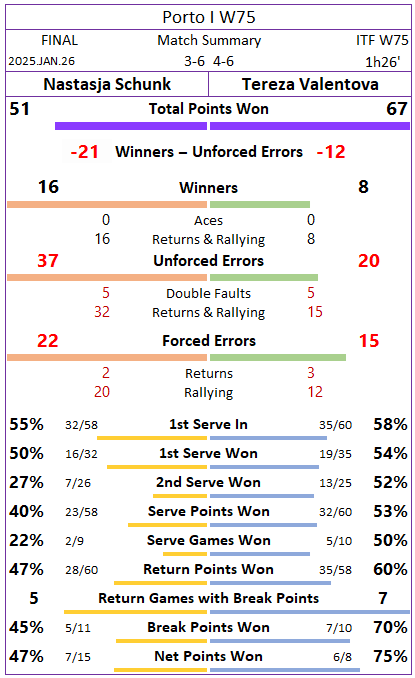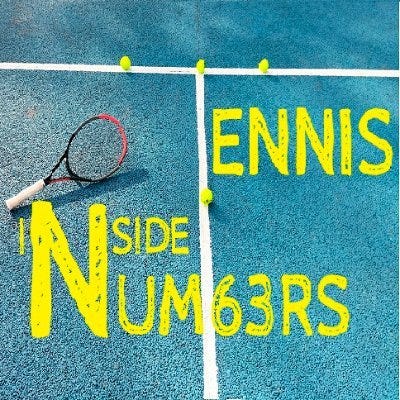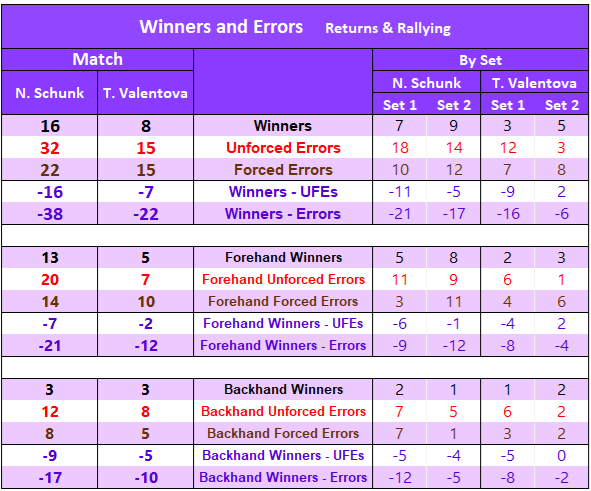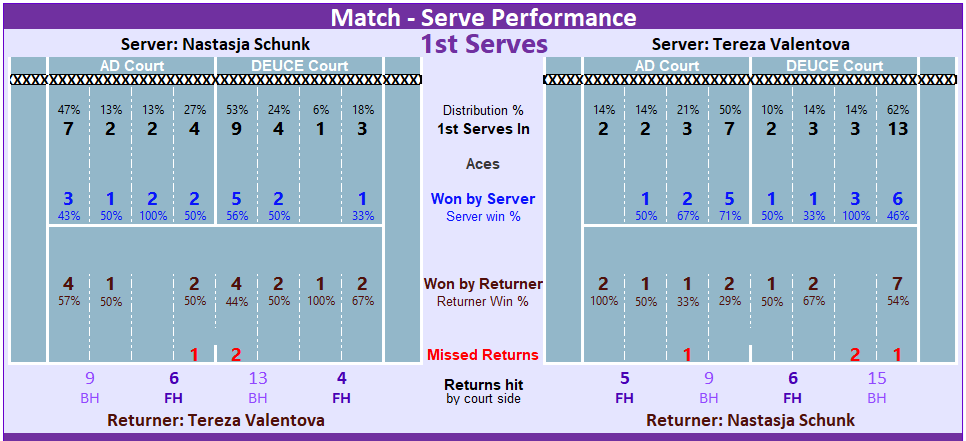ITF W75 Porto: Nastasja Schunk vs Tereza Valentova final analysis
Still only 17, Valentova began her pro campaign with a title for the second year in a row
While the best players in the world chased Major glory during the final stages of the Australian Open, players outside the Top-100 were in Porto contesting the highest level ITF Tour event held in Europe so far this season. Tennis truly never stops.
We can now add that 17-year-old sensation Tereza Valentova (WTA #242) can’t stop winning!
The Czech teenager kicked off her 2025 campaign stringing a handful of wins that culminated in her sixth career pro title, third at ITF W75 level. It was the perfect follow-up to a formidable 2024 season that included the prestigious Roland Garros junior crown, an impressive 21-match unbeaten start to the year at pro events and 5 ITF Tour titles in 10 tournaments played.
Valentova’s 2024 season
5 ITF Tour titles: 2x W75, 1x W35, 2x W15
7 finals reached in 10 pro events played
38-5 record at pro level, including a 21-match win-streak to start year
Junior title at Roland Garros
This week, Valentova came through a tough test in the quarters, knocking out 3-seed Ella Seidel (WTA #140) in a deciding set tie-break. That nail-biter was followed by a more routine 6-2, 6-2 victory over 16-year-old American Tyra Grant (WTA #573) in a rematch of last year’s Roland Garros junior semi-final. Finally, Valentova beat qualifier Nastasja Schunk (#311) 6-3, 6-4 in the Porto championship match.
Schunk fell at the last hurdle on her bid for a hattrick of tournament wins as a qualifier. The 21-year-old lefty holds 2 ITF W25 titles to date, both clinched after starting those weeks in the qualifying draw. This time however, Schunk succumbed to Valentova by virtue of making 24 more errors (59 to 35). A huge deficit she couldn't overcome despite striking twice more winners (16 to 8).
A deeper look at the ITF W75 Porto final identified 3 big factors determining its outcome:
Valentova’s returning dominance
“+1” performances
Long rallies
Valentova served first and enjoyed an unusual start, making 2 forehand unforced errors and a double fault in the first 3 points of the match to fall an early break behind.
But she quickly regained her typical consistency and outlasted Schunk in the pair of long rallies shown below, on her way to an immediate break back.
📺 source: ITF Tour
Valentova would break Schunk’s serve 6 straight times to begin the match, while building a set and 3-1 lead.
Remarkably, Schunk was unable to stop that run despite reaching game point(s) first in 3 of her 4 serve games during the opening set. But she missed 4 opportunities to grab a timely hold with consecutive double faults in one game and a “serve+1” error in 2 other games, and was left ruining her serve struggles.
By the end of the final, Valentova totalled 60% of return points won and 7 of 10 break points converted, for 7 breaks in 9 return games.
Breakdown of points won by rally length revealed that Valentova’s victory derived from 2 decisive advantages:
a 9-point edge in 2-shot and 3-shot rallies (marked by red box, below);
a 7-point edge in rallies decided from the 9th shot onwards (marked by yellow box).
Given Valentova’s superior shot tolerance, her advantage in long rallies was predictable. True to form, she ended up winning 12 of 17 points lasting 9+ shots.
So Schunk needed to neutralize that with highly efficient early-rally aggression. Unfortunately for her, it was the opposite that happened.
Comparison of “+1” performances showed the qualifier accumulated 9 unforced errors on “serve+1s” and “return+1s” combined, 6 more than Valentova’s total of 3. That was the only noteworthy difference between “+1” performances; Schunk hit 2 more winners but was also pressed into 3 more forced errors.
“+1” Performances
Winners: Schunk 7 / Valentova 5
Forced errors: Schunk 7 / Valentova 4
Unforced errors: Schunk 9 / Valentova 3
+/-: Schunk -9 / Valentova -2
Here we show Schunk missing a trio of “+1s” on a type of shot she wasn’t particularly successful during the Porto final: inside-in forehands.
Overall, Schunk finished the match with 6 unforced errors on inside-in forehands with a single winning shot (marked by green box, below). It certainly played a key part in her downfall.

By contrast, Valentova’s groundstroke performance was characterized by an outstanding efficiency on down the line attempts. The teenager struck 7 winning line forehands without an unforced miss (marked by blue box) and complemented those very well with 4 winning line backhands with a single unforced error.
→ Valentova sentencing a couple of points with down the line forehands.
In the end, the factors discussed above combined to provide Valentova a massive superiority during rallies.
She won 13 more baseline duels (41 to 28) and enjoyed a lot more success when playing from the back of the court (58% vs 39%) or at the net (75% vs 50%).
For Schunk, what stood out were 13 unforced errors on groundstrokes hit from the inner half of the Deuce court (yellow circle). It was the same total she had on baseline shots struck from the other 3/4 of the court and was obviously related to her inside-in forehand misfirings.

Nastasja Schunk (WTA #311, qualifier) vs Tereza Valentova (WTA #242)
2025 Porto final - Match Data
Set by Set Stats
Rally length
Strokes Breakdown

Winners and Errors (returns and rally shots)
Serve and Return
1st Serves
2nd Serves
Return & rallying performance



Points won breakdown
This final section gives a last, broader look at the match by presenting how each player won points. Points are listed according to their frequency (highest to lowest) and are named in relation to the last touch on the ball. For simplicity, groundstrokes hit from the 5th shot onwards are grouped together.
Breakdown by side (FHs or BHs)

Breakdown by error type (UFEs or FEs)

To find out more about the stats published here, please visit the following post.
While we follow the same criteria used on all major tennis events, our stats are collected through our own video analysis and are not official WTA or ITF stats.
Thanks for reading!
— Tennis Inside Numbers














